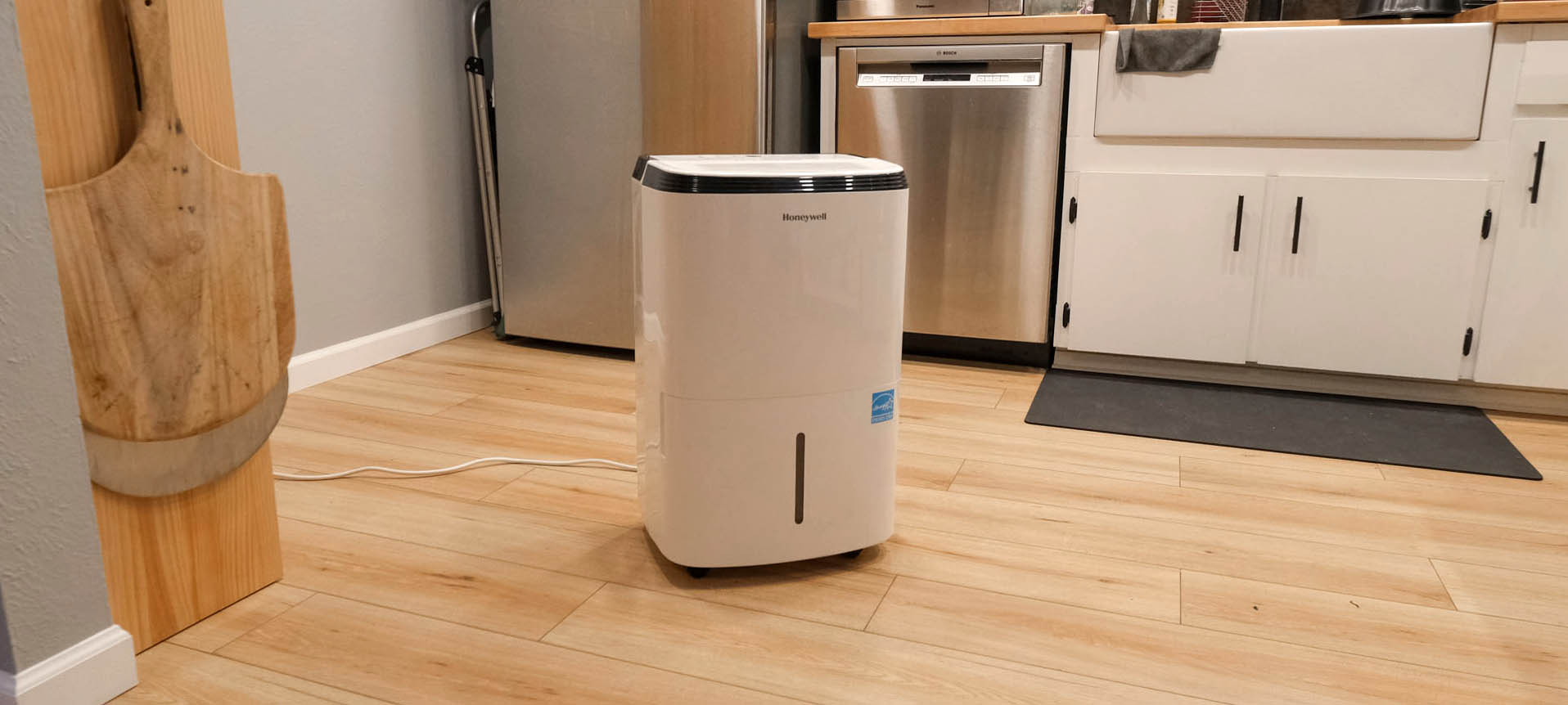Tom's Guide Verdict
Best for bigger, more humid spaces, the Honeywell 50 Pint Dehumidifier works quickly and quietly. It pulls a fair amount of wattage while it’s running, which isn’t surprising given the size. But this is ideal for large spaces (1,000 square feet or more) with lots of humidity.
Pros
- +
Works quickly and efficiently
- +
Quiet operation
- +
Tank is easy to empty
- +
Big power and capacity
Cons
- -
Included drain hose doesn’t feel durable
- -
Power cable is short
Why you can trust Tom's Guide
Weight: 42.5 pounds
Dimensions: 15.7 x 12.4 x 25.4 inches
Maximum sq ft coverage: 4,000 sq ft
Capacity: 50 pints per day
Water tank capacity: 14 pints
Energy Star certified: Yes
It’s tough to get control over humidity in large spaces, like big basements. Using more than one humidifier is a good solution if that space is subdivided, but that means spending more money and using more energy. Fortunately, Honeywell’s 50 pint Dehumidifier is made specifically to handle the big task of dehumidifying large spaces.
Honeywell says it can handle up to 4,000 square feet, in fact. That’s pretty massive. The unit itself can handle up to 50 pints per day, and its water tank capacity is 14 pints. That means you may end up emptying that tank frequently — unless you use the included hose to drain automatically and continuously.
In large spaces, the Honeywell 50 Pint Dehumidifier works quickly, efficiently, and quietly. It’s a great choice for large basements or even bigger spaces, or in locations with lots of consistent humidity.
Honeywell 50 Pint Dehumidifier review: Price and availability
Honeywell’s 50 Pint Portable Dehumidifier costs $380 and is available for purchase directly through Honeywell’s website. If you purchase through Honeywell, you will get free shipping on the unit.
It is also available for $299 on Amazon, and other retailers such as Walmart, Wayfair, Lowes, Home Depot, and Best Buy.
Honeywell 50 Pint Dehumidifier review: Design
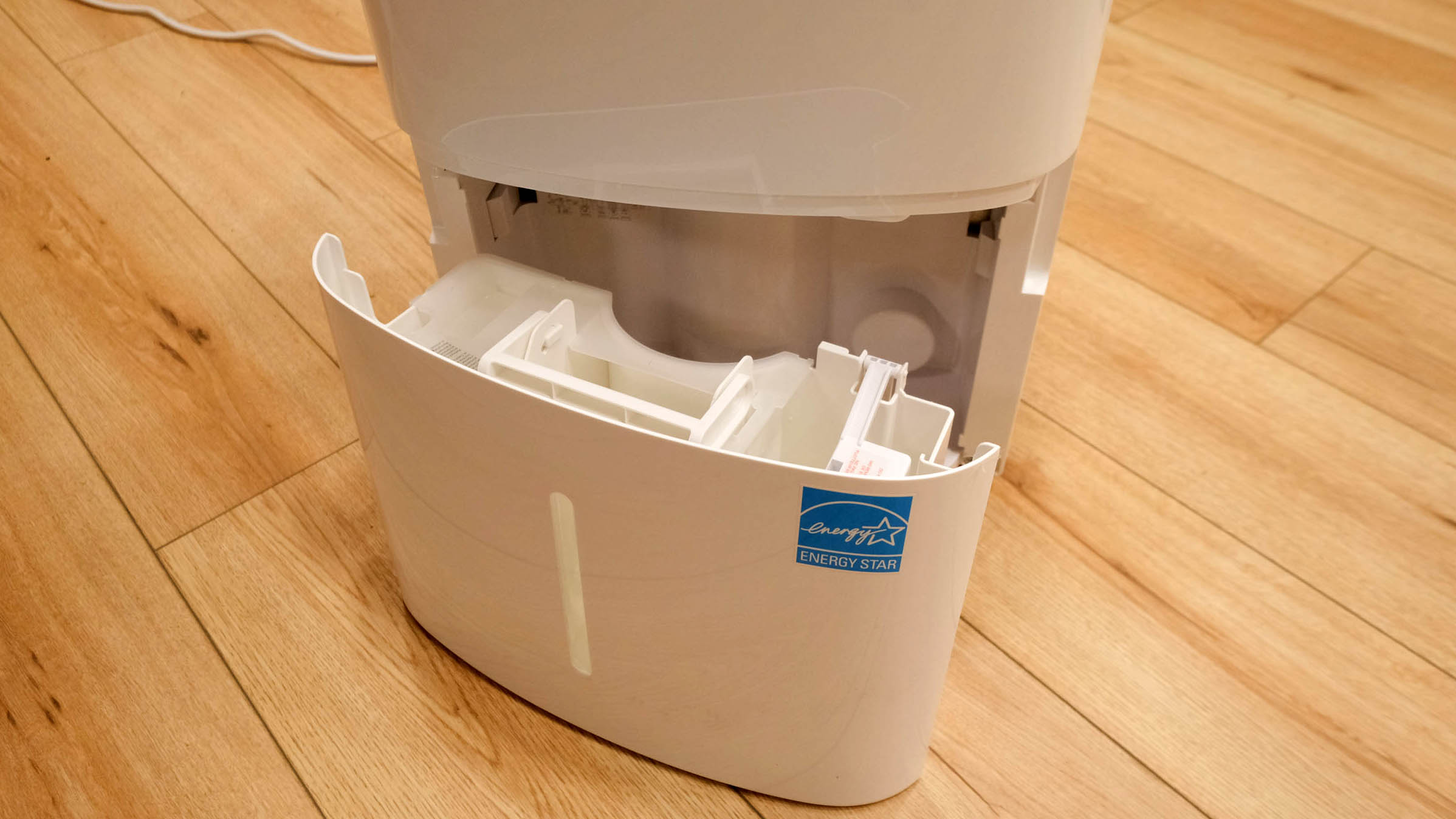
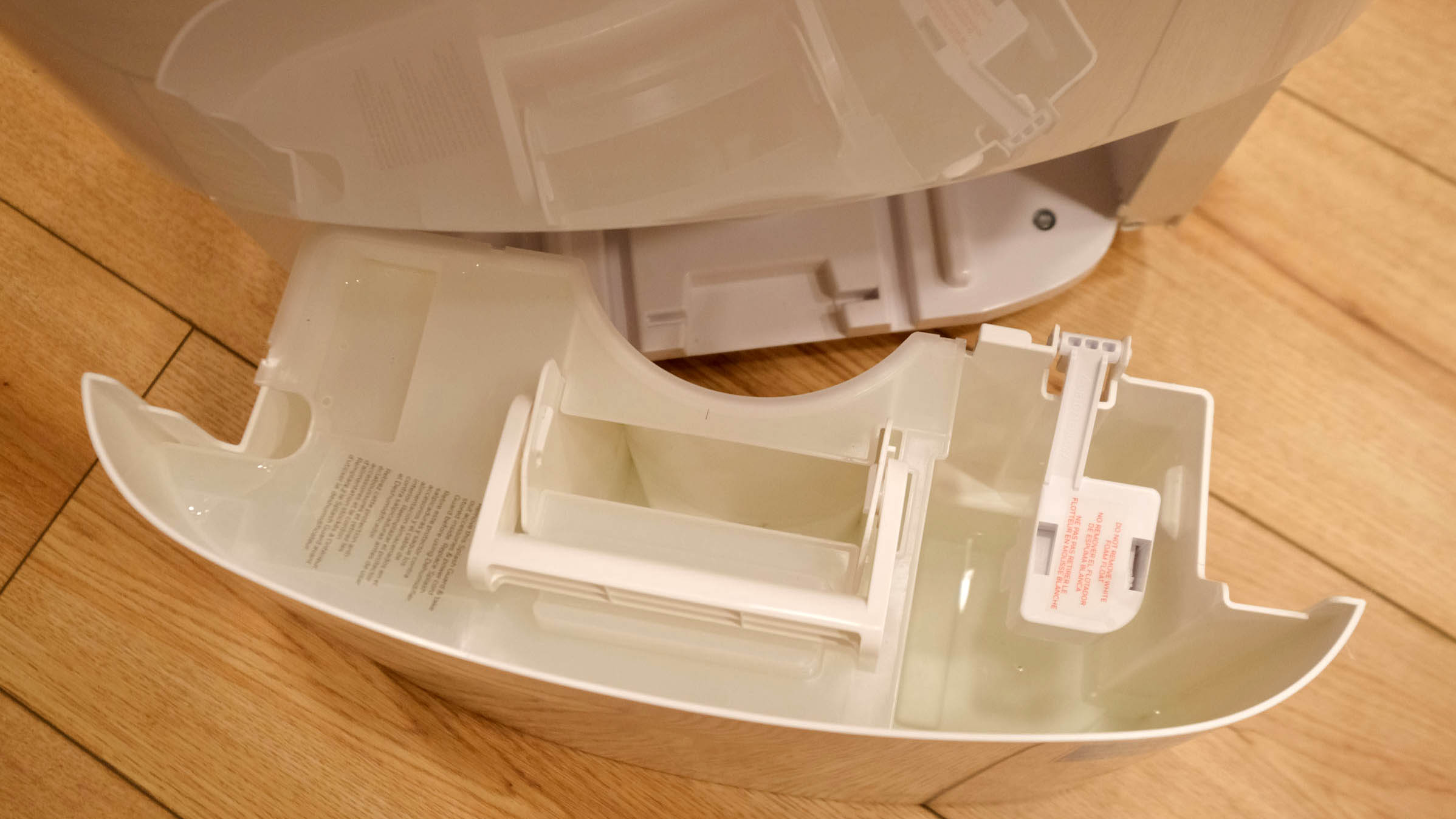
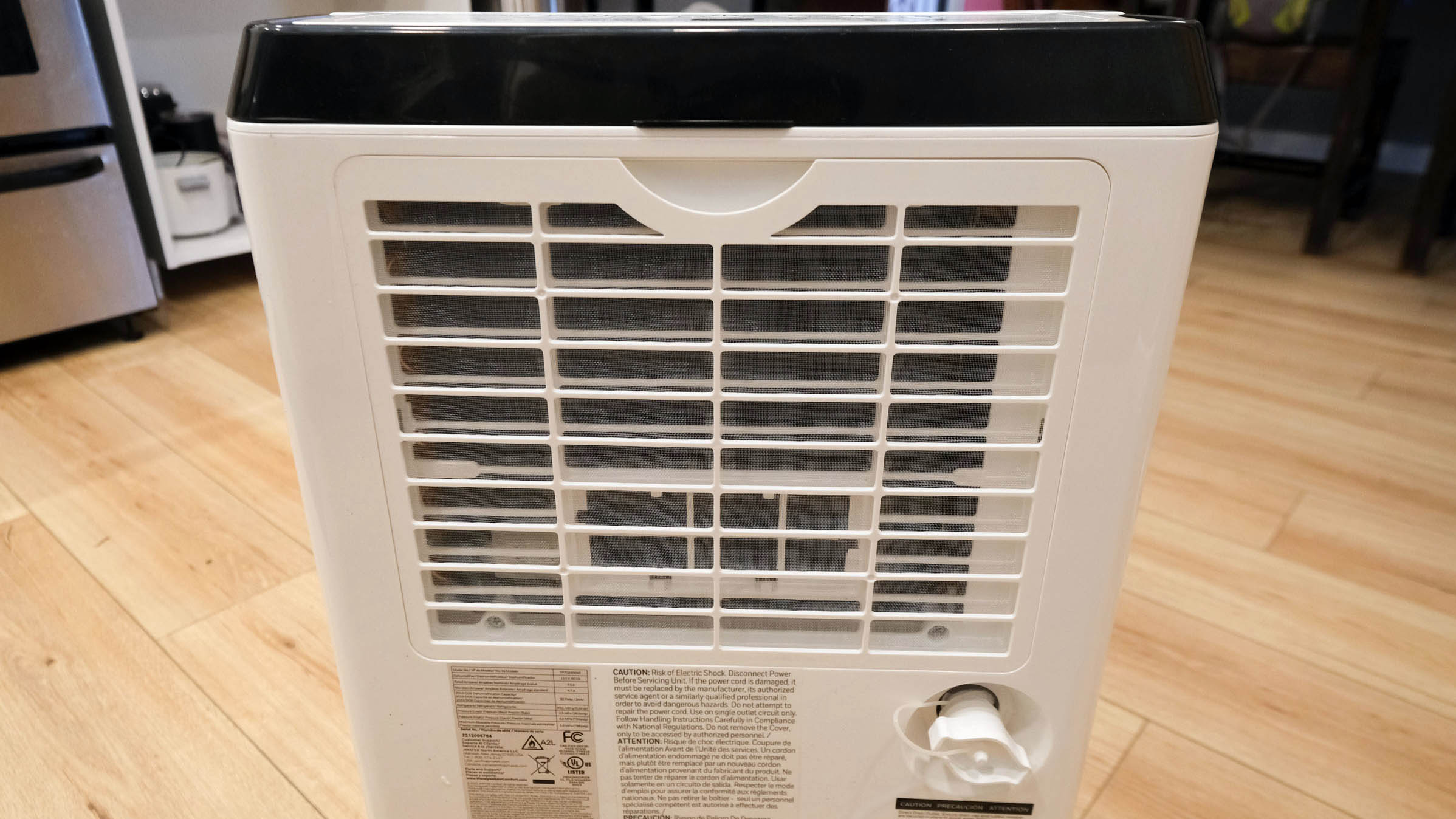
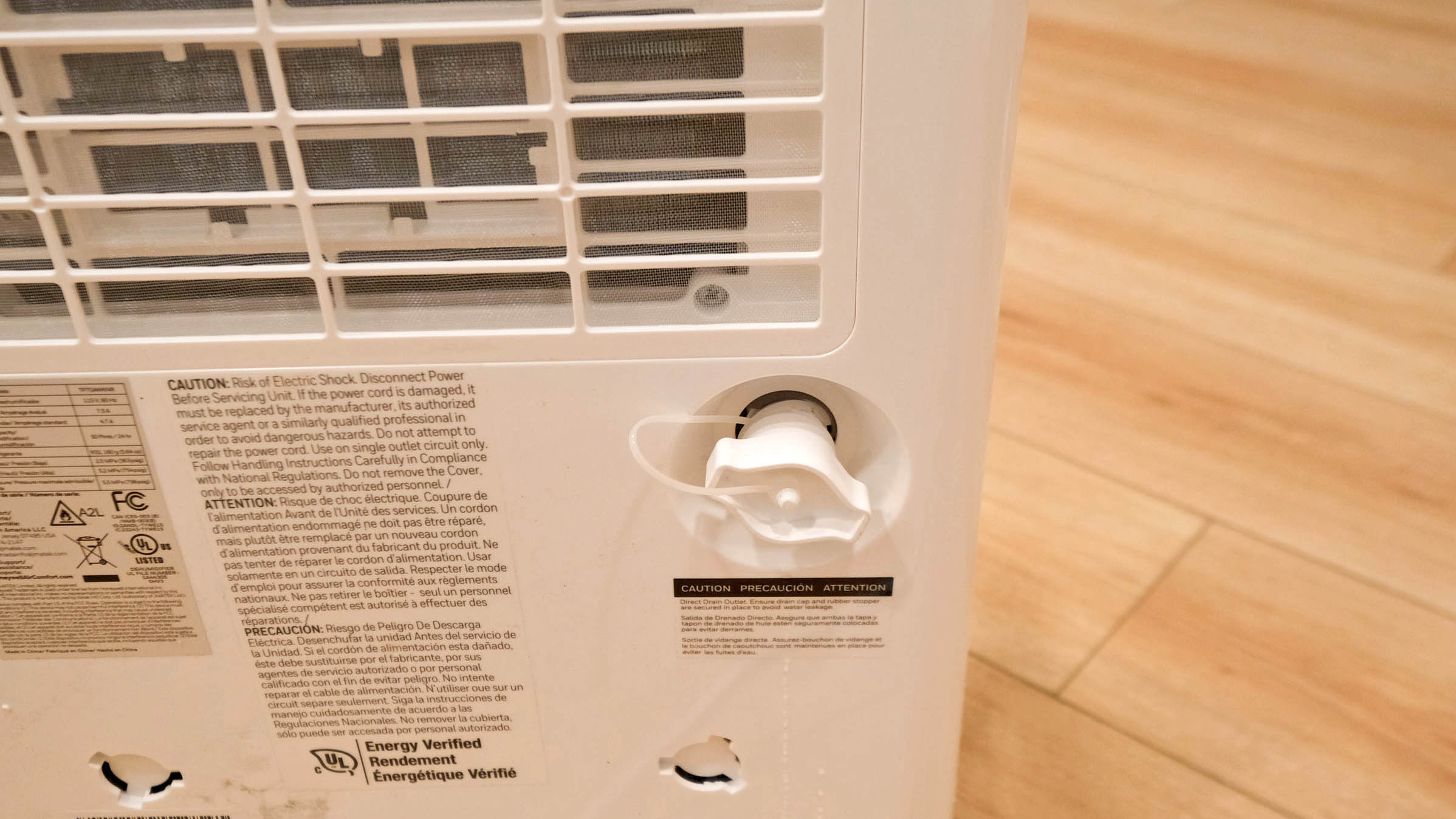
The Honeywell 50 pint dehumidifier is ideal for large rooms and basements up to 4,000 square feet. That means its stature fits the duty: it stands about 26 inches tall and weighs almost 43 pounds. Fortunately, it’s easy to move on the included casters, and if you need to pick it up, a large handle provides a good gripping area.
The plain white casing makes it easy to blend into just about any room. It’s a dehumidifier after all, and you want it to essentially disappear into the decor. Yet it still has some modern touches that make it kind of cool, like the mirage display on the front of the unit, which seems to shine right through the face of the dehumidifier. There’s also a digital display on top for a clearer readout when you’re performing various functions.
The removable water tank features a splash guard, which helps prevent water from sloshing over the side of the tank when you’re preparing to empty it. If you’ll be using the Honeywell 50 pint dehumidifier in continuous mode, the drain tube is included.
Inside the unit, Honeywell includes a removable dust filter, which is washable, so you get a longer life out of it. Honeywell recommends you wash the filter every two weeks during consistent operation of the unit. There’s a filter-clean alert to remind you to perform this function.
Other features include a 24-hour timer, sleep mode, auto-restart, auto-defrost, and full tank alert. The unit is Energy Star Rated for low power consumption, and there’s a thermal overload protection to ensure safe operation.
Honeywell 50 Pint Dehumidifier review: Performance
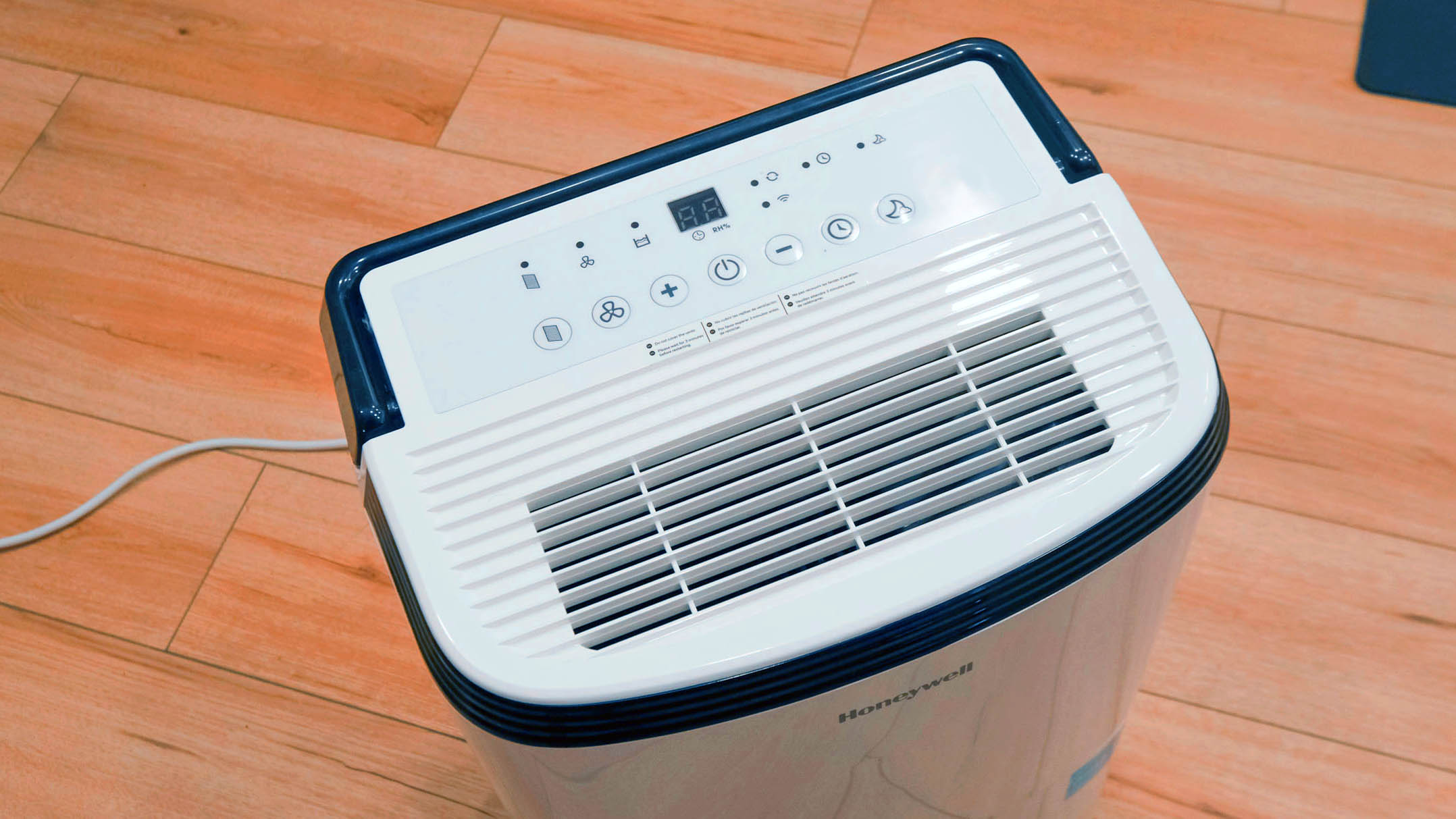
I set up the Honeywell 50 Pint Dehumidifier in my basement bathroom for its first run. Once it’s plugged in, it’s basically ready to go unless you want to use the app to control it — which I did.
However, initial pairing between my phone and the dehumidifier did not go smoothly. The app did not seem to be able to find the device, so I restarted the app several times, then reinstalled it entirely. I checked my internet connection as well to make sure it was strong.
By the fifth try, I was able to get the device paired. There are a lot of reasons this could have happened, and the most likely culprit is proximity of the device to the WiFi router. That means you’ll probably have better luck if you place the device close to your router for the pairing process, then move it wherever you want to put it in your house.
Once the app was set up, it was easy to use and control the dehumidifier to accomplish what I needed it to do. I ran the shower for a good long while to get the room as humid as I could get it. When I turned the dehumidifier on, it read the humidity in the room at 90%, which matched Alexa’s air quality monitor’s reading.
It took less than an hour for the Honeywell 50 Pint Dehumidifier to pull the humidity down to the 35% level I set. That’s pretty darn fast, which isn’t surprising given the size of the unit.
While it ran, it seemed quieter than other units I have tested recently. But according to my decibel meter, it was right on par with the others at about 56 decibels on average. That’s pretty quiet and wasn’t a bother in a small room. In a much larger room, you’d barely notice it running at all.
I ran this test a few times in the bathroom to ensure consistency, and the results were just about the same every time: 90% to 35% humidity in less than an hour. The tank, while fairly small for a unit this large, is easy to empty, and I only had to do that once during the four or five total tests I ran on it.
There’s a hose included as well so you can run the unit in continuous mode if you’d rather not have to empty the tank over and over again. That said, there is a setting in the app to alert you to a full tank.
After the bathroom tests, I moved the dehumidifier to the larger basement space. That includes a laundry room, a storage room, and a living space. All told, it’s about 900 square feet, which should still make for easy work for the Honeywell dehumidifier.
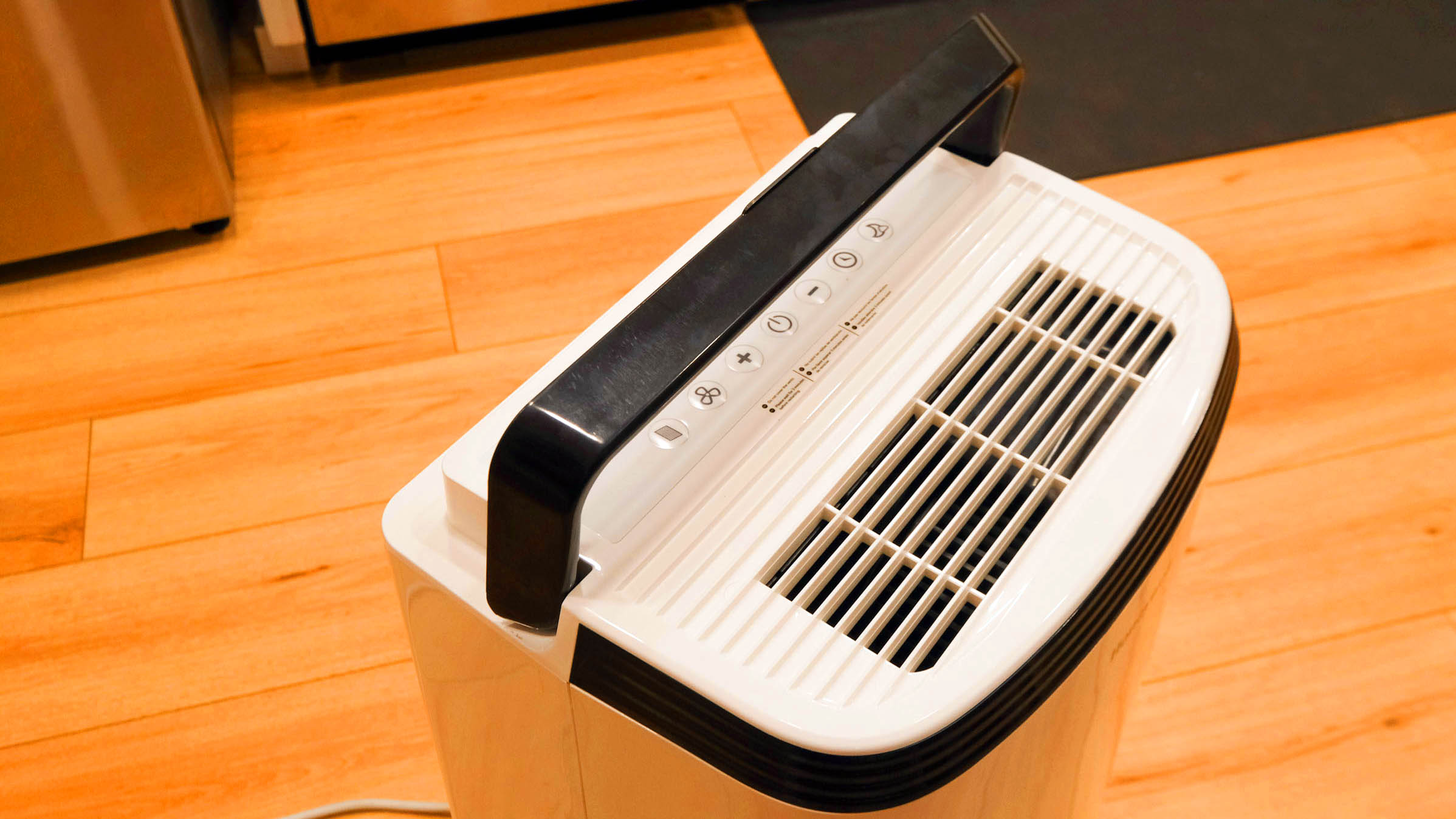
In the bigger basement space, it worked super quickly to bring the humidity down. When I turned the unit on, it read 89% ambient humidity, which was clearly inaccurate. My guess is having moved it from one room to another, it was still adjusting to the new space. After a few minutes of running, the reading rapidly dropped to 65%, which was on par with my Alexa air quality monitor.
In just an hour, the humidity level dropped down to about 45%. I had set the target at 35%, so the unit continued to run for another hour. It reached 36% when I checked again. It seemed to have difficulty getting that last 1%, and after another thirty minutes I called it a relative success and shut the unit down.
The Honeywell Dehumidifier uses about 500 watts of power while it’s running with the fan on high. When it’s turned off, it pulls about 31 watts. By comparison, the HomeLabs 22-Pint Dehumidifier, which is suitable for rooms up to 1,500 square feet, uses about 250 watts while running on High. So while the Honeywell’s power usage number may seem high at first glance, keep in mind it’s running to dehumidify a much larger space. It is therefore on par with what I expect the power draw to be for a dehumidifier this large.
Honeywell 50 Pint Dehumidifier review: App
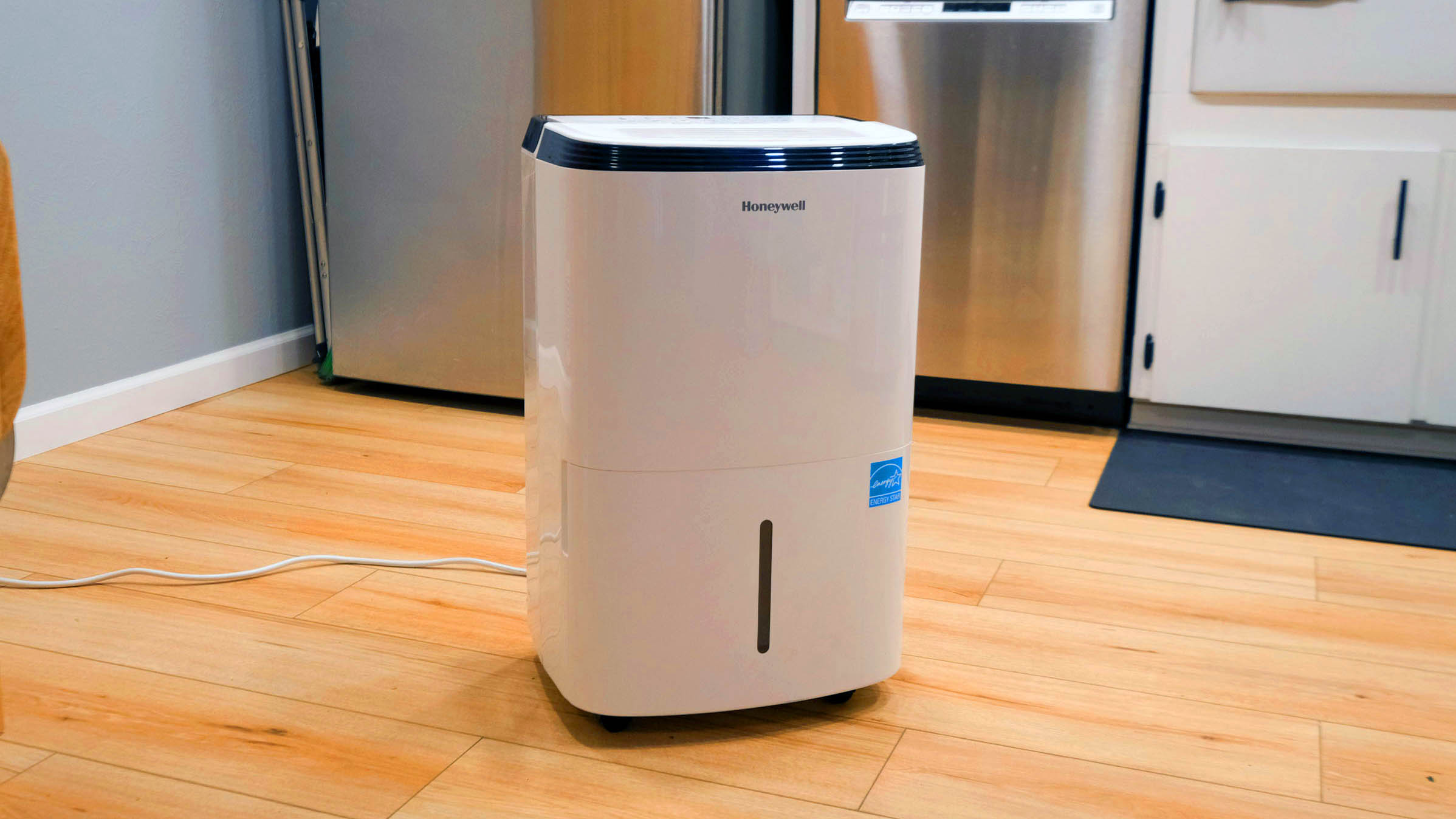
The Honeywell Air Comfort App is a simple and intuitive app to use. Three tabs — Home, Smart, and Me — make navigation straightforward. The Home tab lists your devices, which you can control through your phone by tapping on them in the list.
The Smart tab allows you to create scenes — organization of your various Honeywell products to turn on or off, adjust levels, and more based on time of day, weather changes, or device status changes. You can also set up multiple devices to run at the same time by using AI-enabled speakers.
The Me tab contains your personal info, group product management, messages, and FAQs.
I mostly used the app to turn the dehumidifier on and off, and to set the humidity level to a specific target number. It would likely get a lot more use if I had more than one Honeywell product to set up in the app.
Honeywell 50 Pint Dehumidifier review: Verdict
The Honeywell 50-Pint Dehumidifier works quickly and efficiently in large spaces and very humid rooms. It’s quiet for its size, too. While the tank is fairly small, you can run it continuously using the included drain hose.
The app is easy to use and intuitive, though pairing did take more effort than I would have liked. The only real complaint I have with this unit is its short power cable, but that can be remedied with an extension cord. It’s a good unit for large spaces, and aesthetically, it disappears in just about any room. Choose this unit for large basement spaces, but look for something smaller if you’re just looking to dehumidify a small room like a bathroom or home office.
Dan Cavallari is the former technical editor for VeloNews Magazine, who currently reviews electric bikes, bike lights, and other bike accessories for Tom's Guide. In addition to VeloNews, his work has appeared in Triathlete Magazine, Rouleur Magazine, CyclingTips.com, Road Bike Action, Mountain Bike Action, CycleVolta.com, Tomsguide.com, and much more. Dan also hosts two podcasts on his site, Slow Guy on the Fast Ride: One is about cycling and other outdoor activities, while the other looks at mental health issues. Most recently, Dan also covered the 2022 Tour de France. Dan lives outside of Denver, Colorado with his family.
